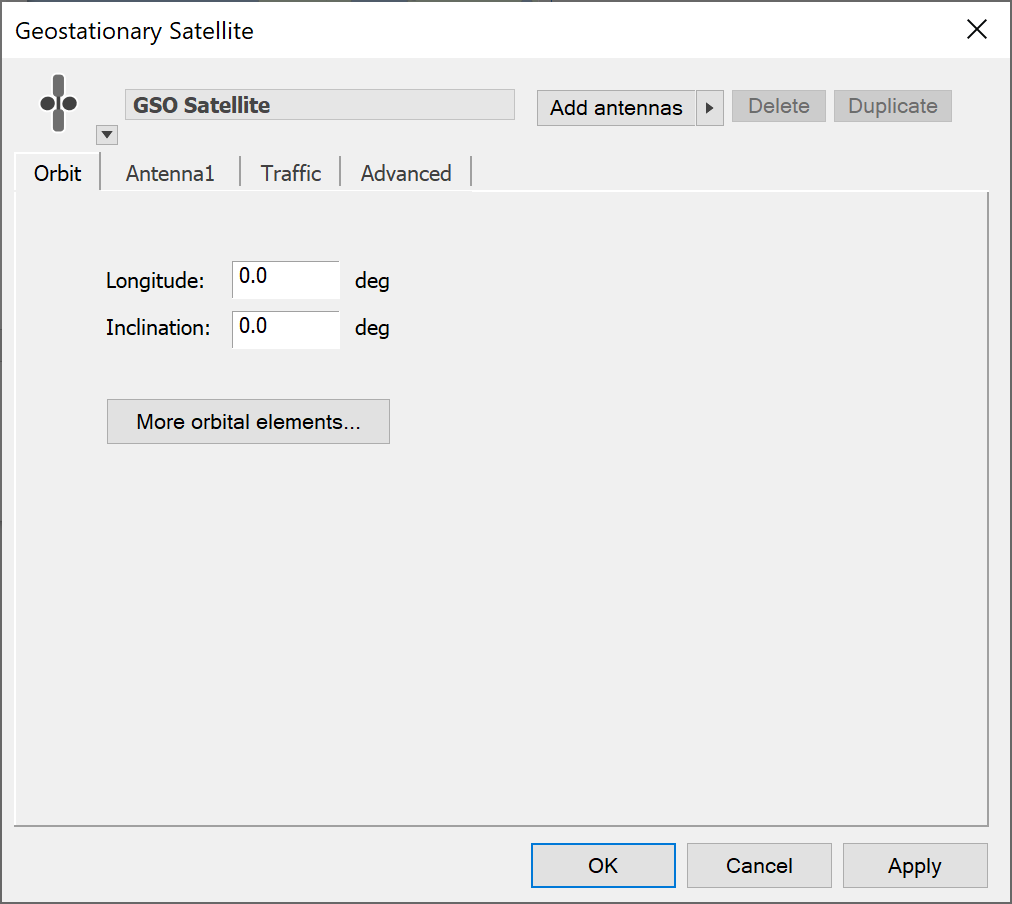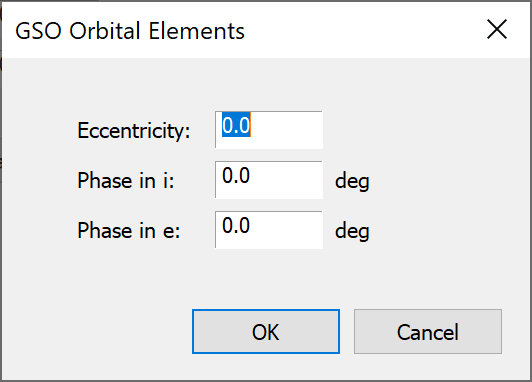GSO Satellites
Geostationary satellites are in orbit just like the non-GSOs. However, because they maintain a roughly fixed position above the earth, we don’t need to define them by the classical orbit elements and can specify their position in a simpler way.

For most GSO work, only the longitude and inclination angle are required. For more advanced modelling, click the “More orbital elements” button. This will open the GSO orbital elements dialog. This allows you to specify the eccentricity, and phase in e and i.

Phase in e (eccentricity) and Phase in i (inclination) relate to orbital anomaly (see the Technical Annex). Phase in e tells you how far from the apogee the satellite is at and Phase in i how far it is from maximum inclination – when the satellite was created. These parameters can have a dramatic effect on the ground track of satellite that is not in exactly circular orbit.